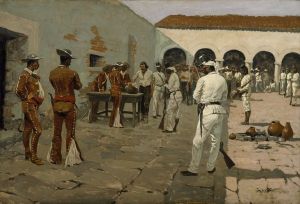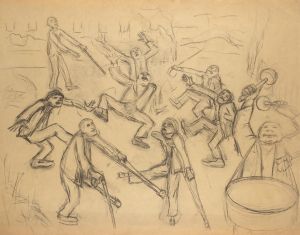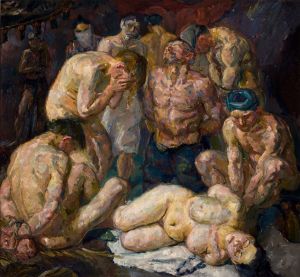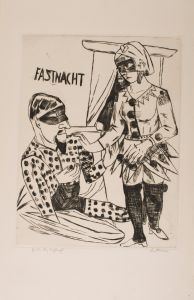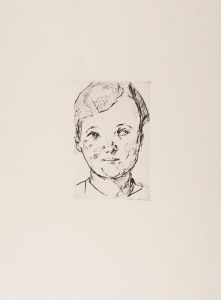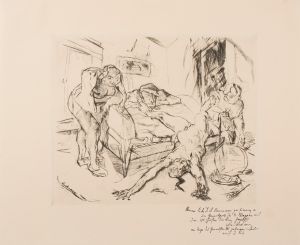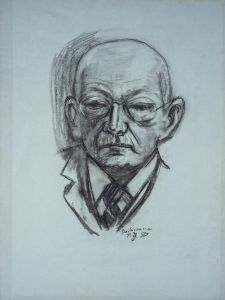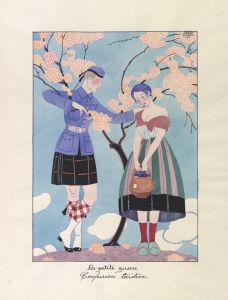
Apokalypse
A hand-painted replica of Max Beckmann’s masterpiece Apokalypse, meticulously crafted by professional artists to capture the true essence of the original. Each piece is created with museum-quality canvas and rare mineral pigments, carefully painted by experienced artists with delicate brushstrokes and rich, layered colors to perfectly recreate the texture of the original artwork. Unlike machine-printed reproductions, this hand-painted version brings the painting to life, infused with the artist’s emotions and skill in every stroke. Whether for personal collection or home decoration, it instantly elevates the artistic atmosphere of any space.
Max Beckmann's "Apokalypse" is a significant work in the oeuvre of the German painter, draftsman, printmaker, and writer. Beckmann, born on February 12, 1884, in Leipzig, Germany, is often associated with the Expressionist movement, although his style evolved significantly throughout his career. "Apokalypse," created in 1943, is a powerful example of his mature work, reflecting the tumultuous period during which it was made.
The painting "Apokalypse" is part of Beckmann's broader exploration of themes such as human suffering, existential dread, and the search for meaning in the face of chaos. These themes are particularly resonant given the historical context of World War II, during which Beckmann was living in exile in Amsterdam. The war and its associated horrors deeply influenced his work, and "Apokalypse" can be seen as a response to the widespread destruction and moral collapse of the time.
In "Apokalypse," Beckmann employs a complex, multi-figured composition that is characteristic of his later work. The painting is filled with symbolic imagery and dramatic, often nightmarish scenes that evoke a sense of impending doom and revelation, aligning with the traditional concept of the apocalypse. Beckmann's use of bold, expressive lines and a dark, somber palette enhances the emotional intensity of the piece.
The figures in "Apokalypse" are rendered in Beckmann's distinctive style, with exaggerated forms and distorted features that convey a sense of inner turmoil and anguish. The crowded composition and the interplay of light and shadow create a dynamic, almost chaotic visual experience, drawing the viewer into the tumultuous world Beckmann depicts. This complexity and depth are hallmarks of Beckmann's work, reflecting his interest in the human condition and the psychological underpinnings of his subjects.
Beckmann's "Apokalypse" also reflects his interest in mythology and religion, themes that recur throughout his body of work. The painting can be interpreted as a modern retelling of the biblical apocalypse, with its scenes of destruction and judgment. However, Beckmann's approach is not didactic; instead, he invites viewers to engage with the imagery and draw their own conclusions about its meaning and relevance.
Max Beckmann's career was marked by significant upheaval and change, both personally and professionally. After serving in World War I, he experienced a profound shift in his artistic vision, moving away from the more traditional styles of his early work towards a more expressionistic and symbolic approach. His experiences during the war, combined with the political and social upheavals of the early 20th century, profoundly influenced his art.
"Apokalypse" stands as a testament to Beckmann's ability to capture the essence of his time while also addressing universal themes that resonate across different eras and cultures. The painting is a powerful example of his mature style, characterized by its complexity, emotional depth, and rich symbolism. It remains an important work in the study of 20th-century art, reflecting both the personal vision of the artist and the broader historical context in which it was created.
Max Beckmann continued to produce significant works until his death on December 27, 1950, in New York City. His legacy endures through his contributions to modern art, with "Apokalypse" being a notable example of his profound impact on the artistic landscape of his time.





